We went to the Reading Public Museum to see an Impressionism exhibit, but had this M.C. Escher (1898-1972) exhibit on our radar, as well. It went on and on, room after room – what a surprise it was! It included 150 pieces from a private collection, and featured works that spanned his entire career. Over his lifetime, Escher made 448 lithographs, woodcuts, and wood engravings, in addition to more than 2,000 drawings and sketches.
Escher was a well-known graphic artist, but his fascination with mathematical theory impacted his art. He referred to himself in an interview as a mathematician rather than an artist. He was most known for his mind-bending, seemingly impossible images, which “challenged notions of reality and its underlying structures.” However, this exhibit showed other sides of his work, as well, which was very interesting to see.
The cover photo is Three Spheres II, 1946, which features himself in a self-portrait.
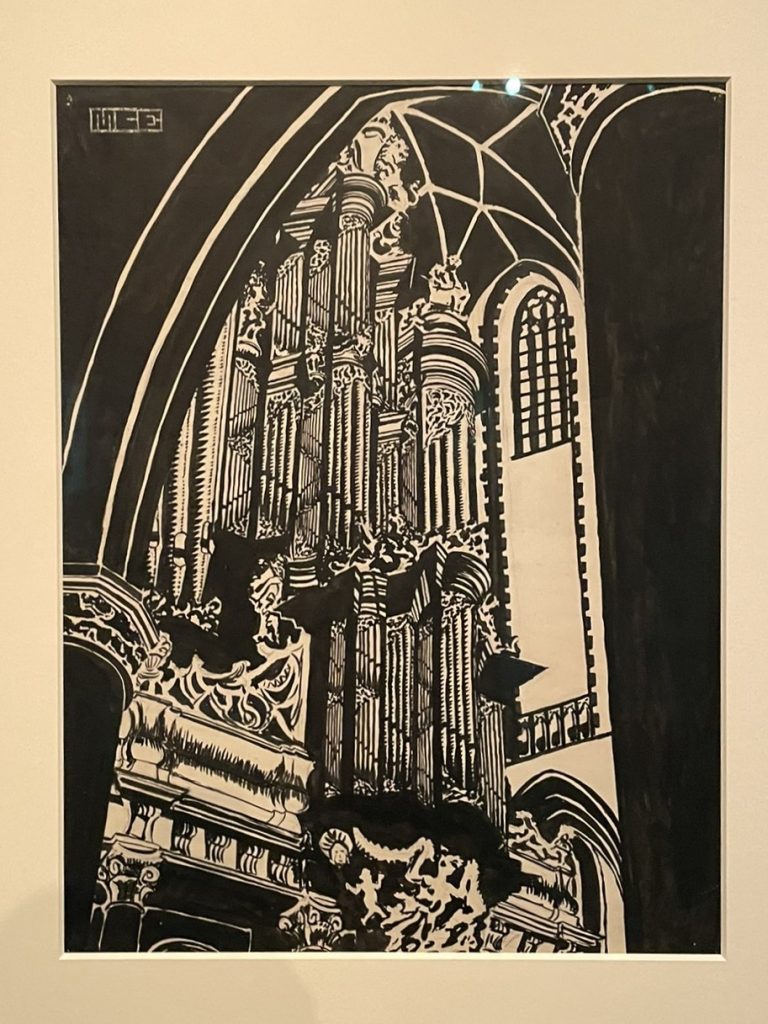
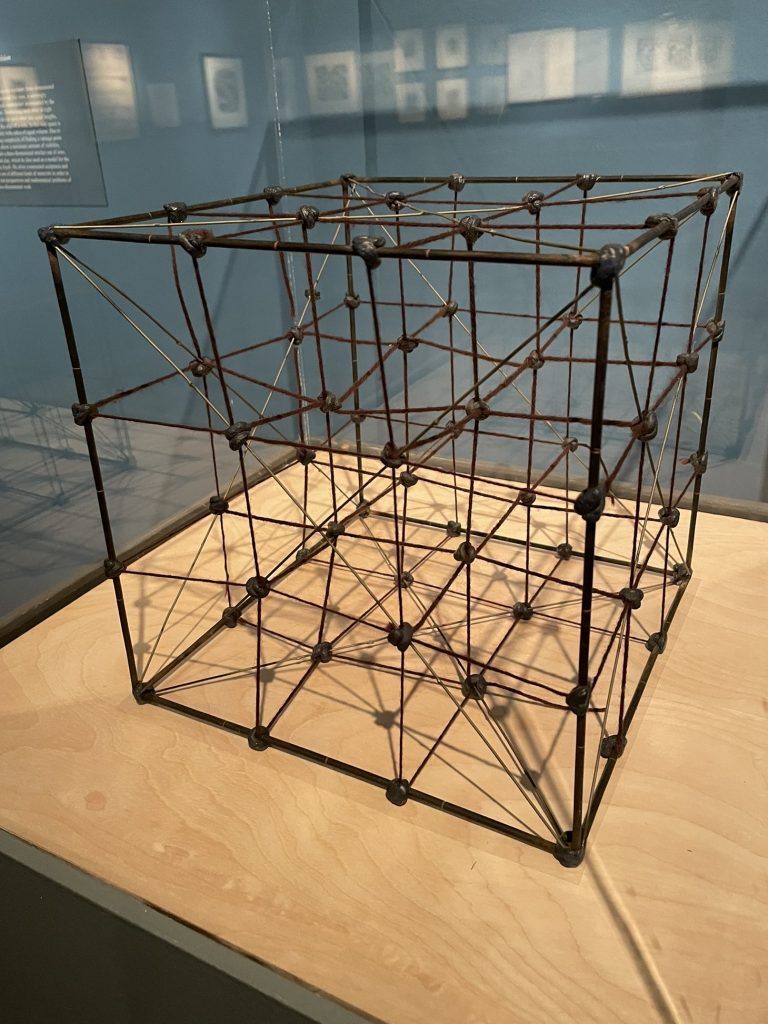
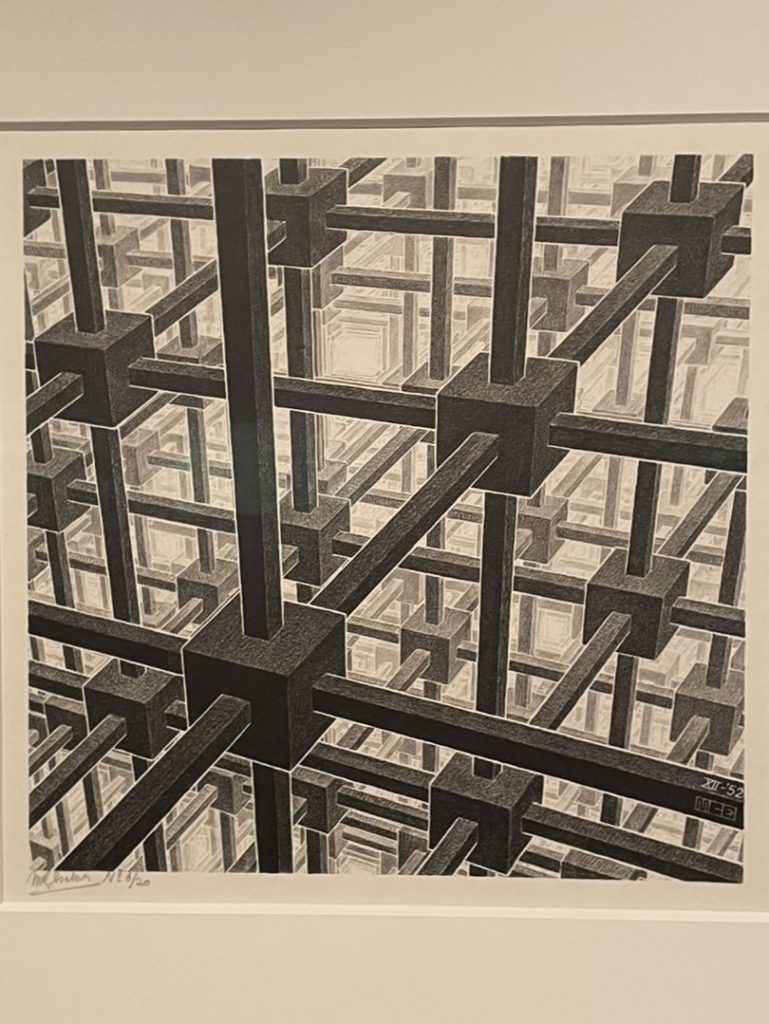
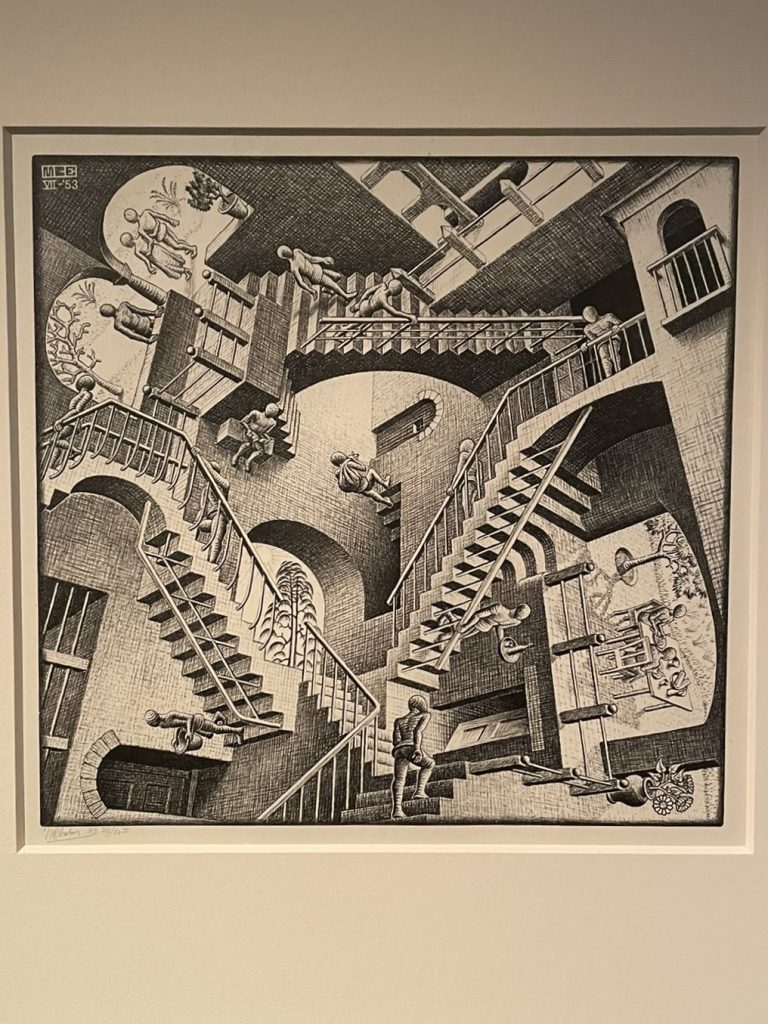
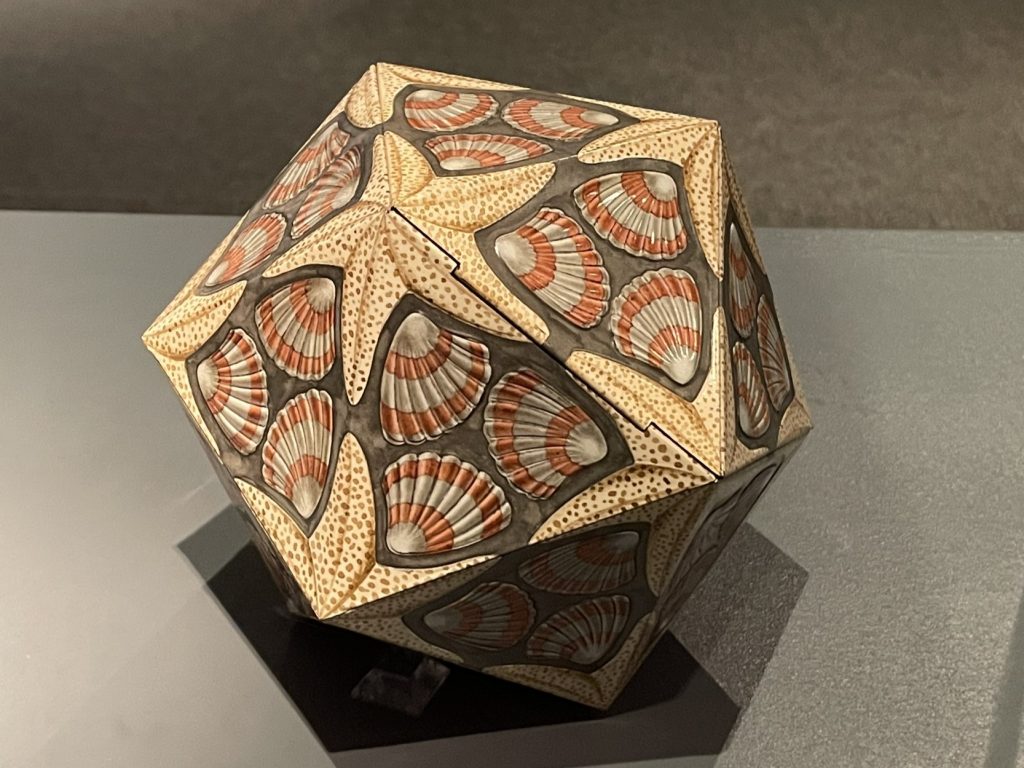
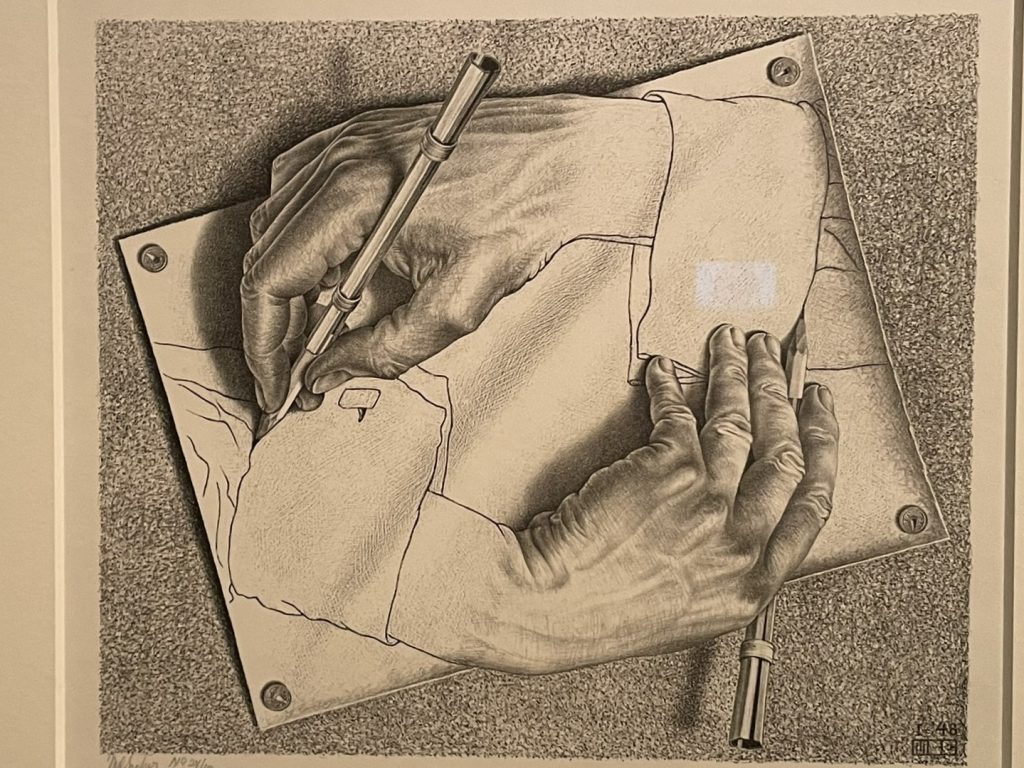
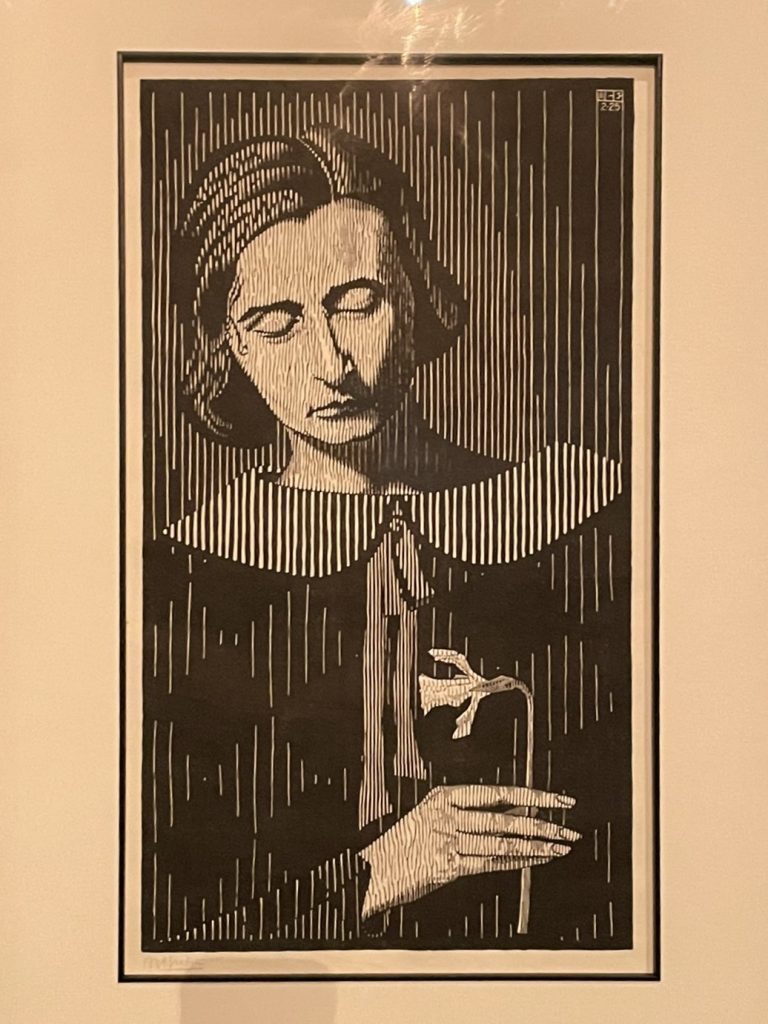
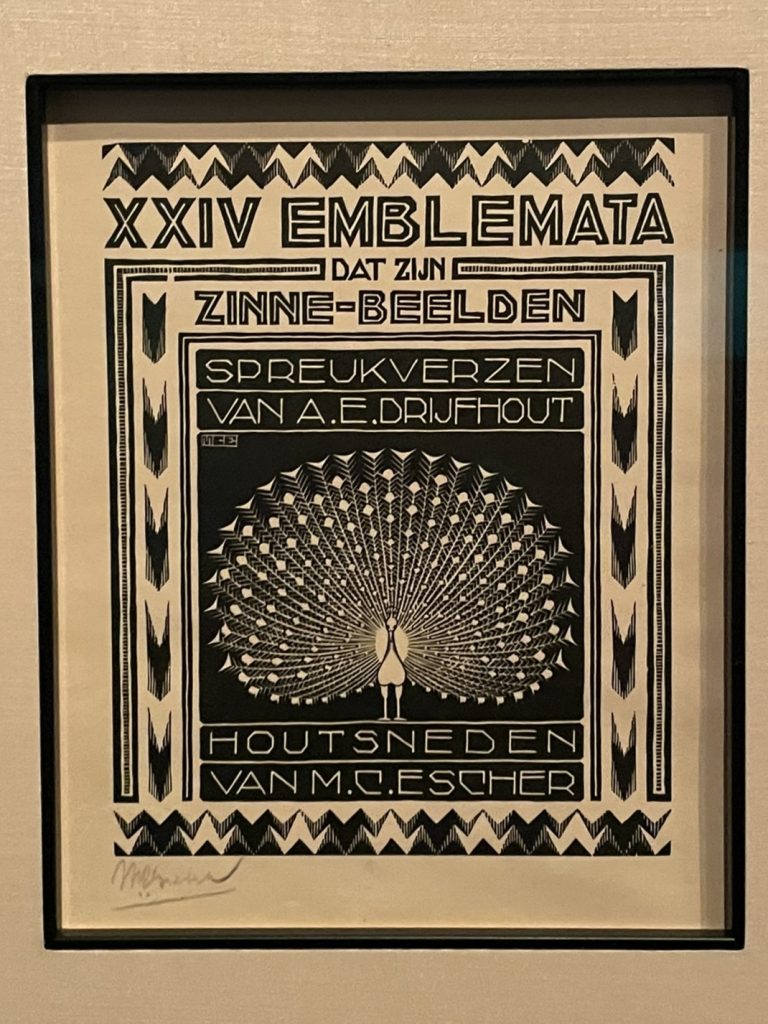
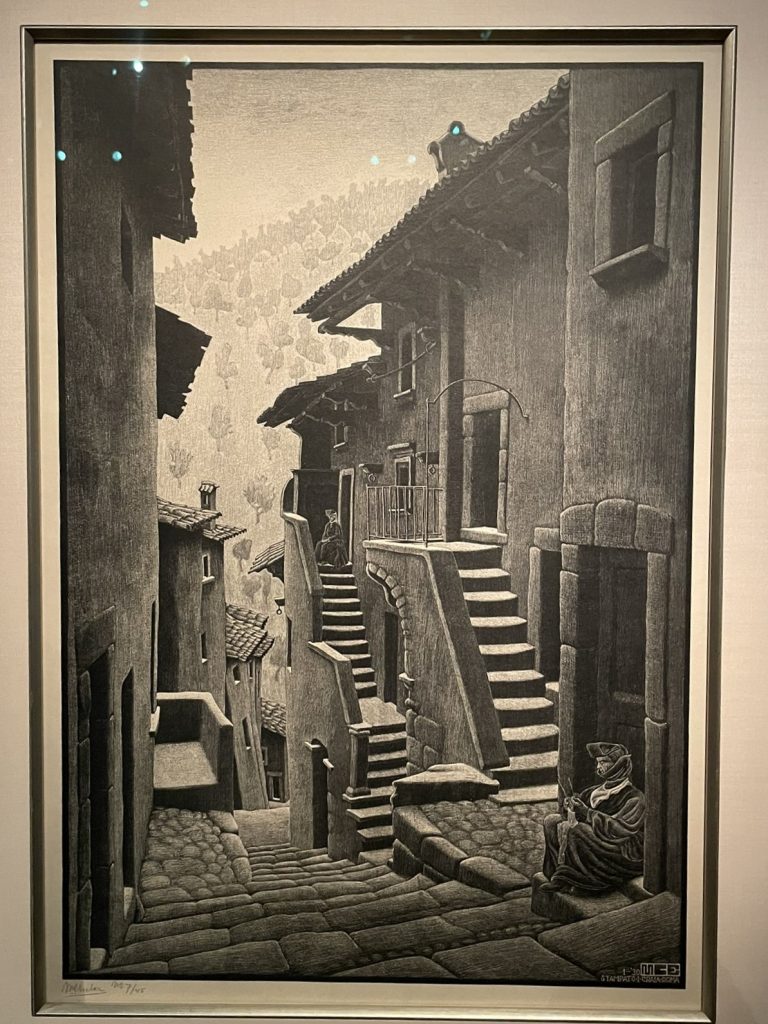
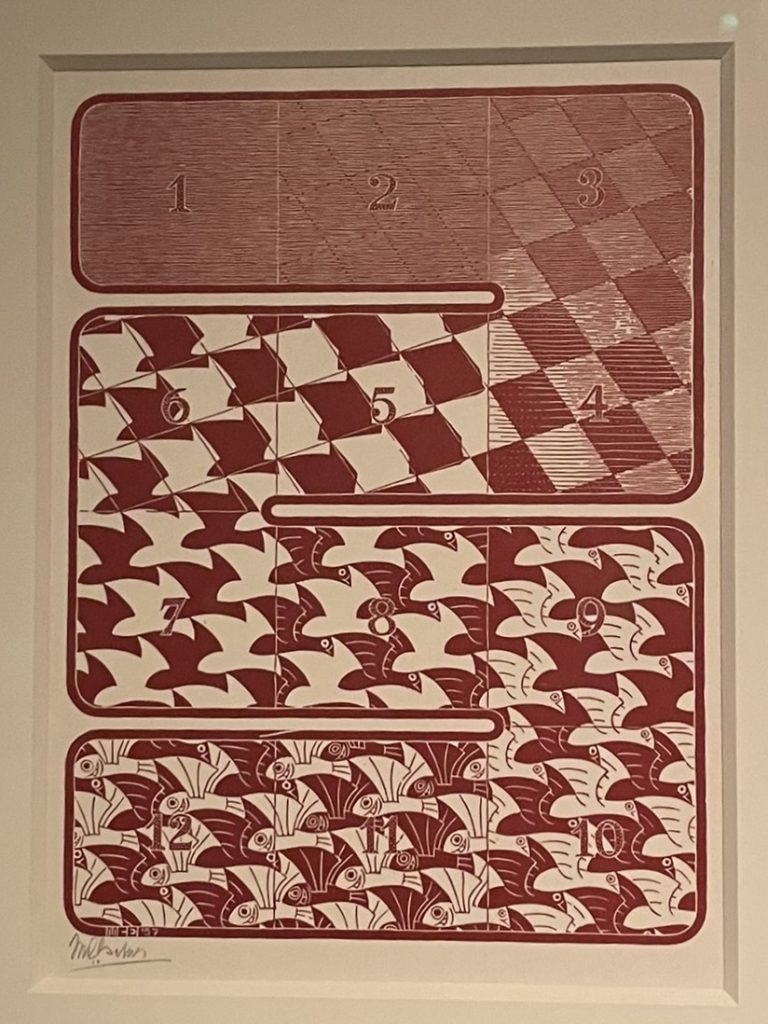
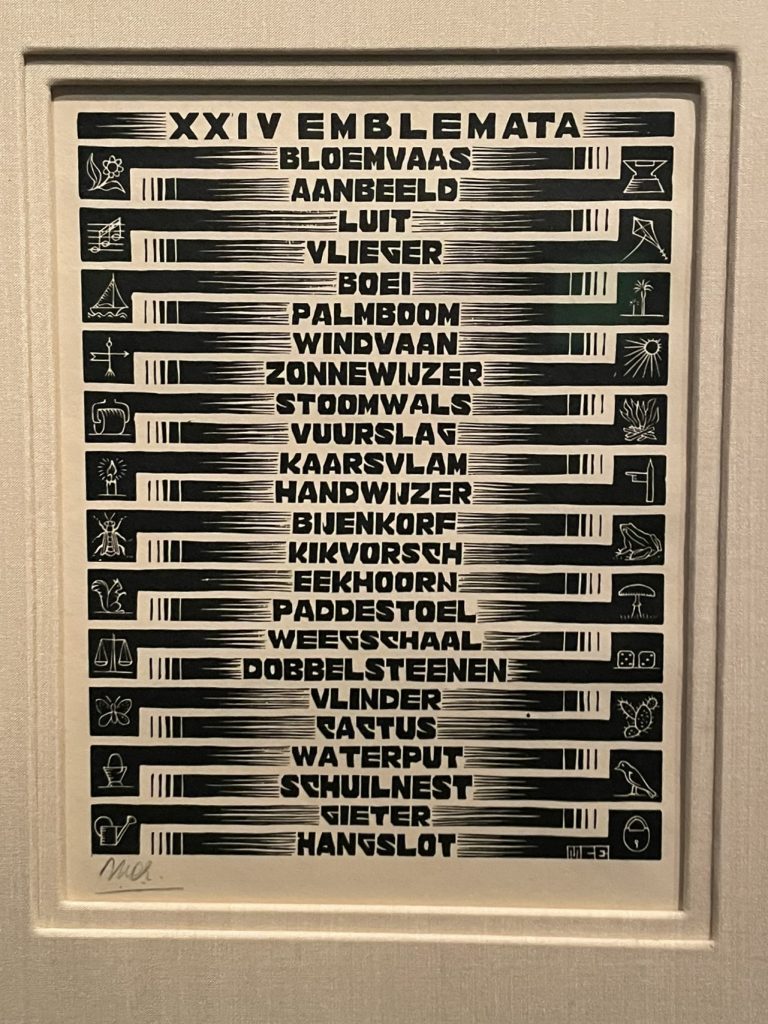
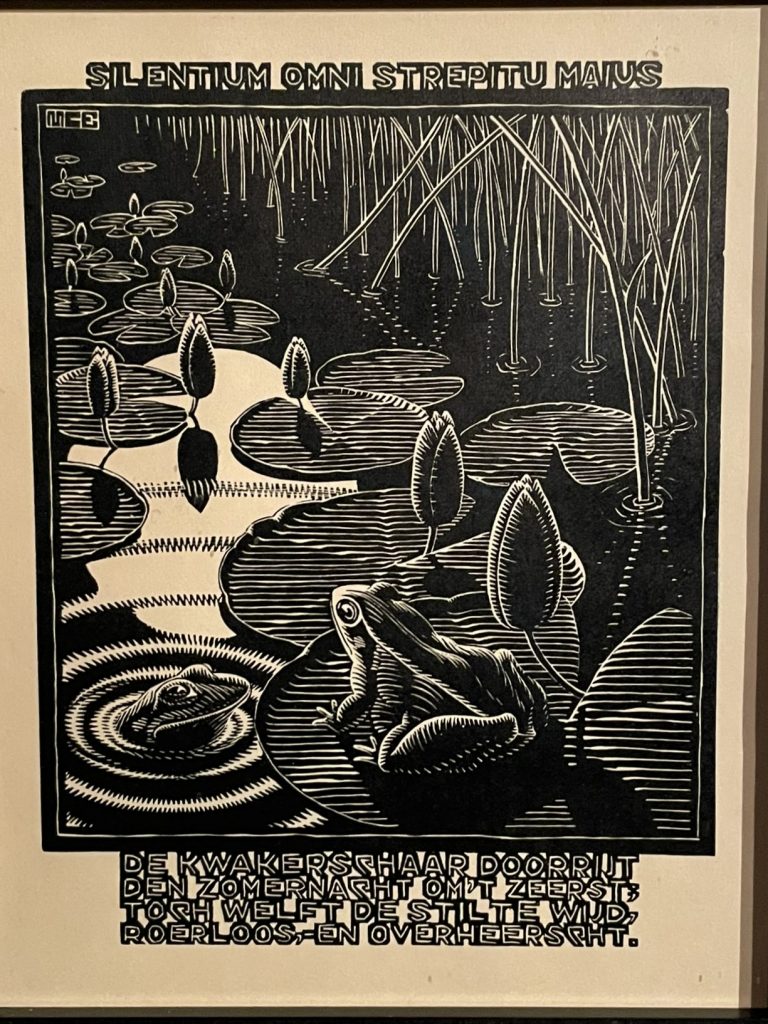
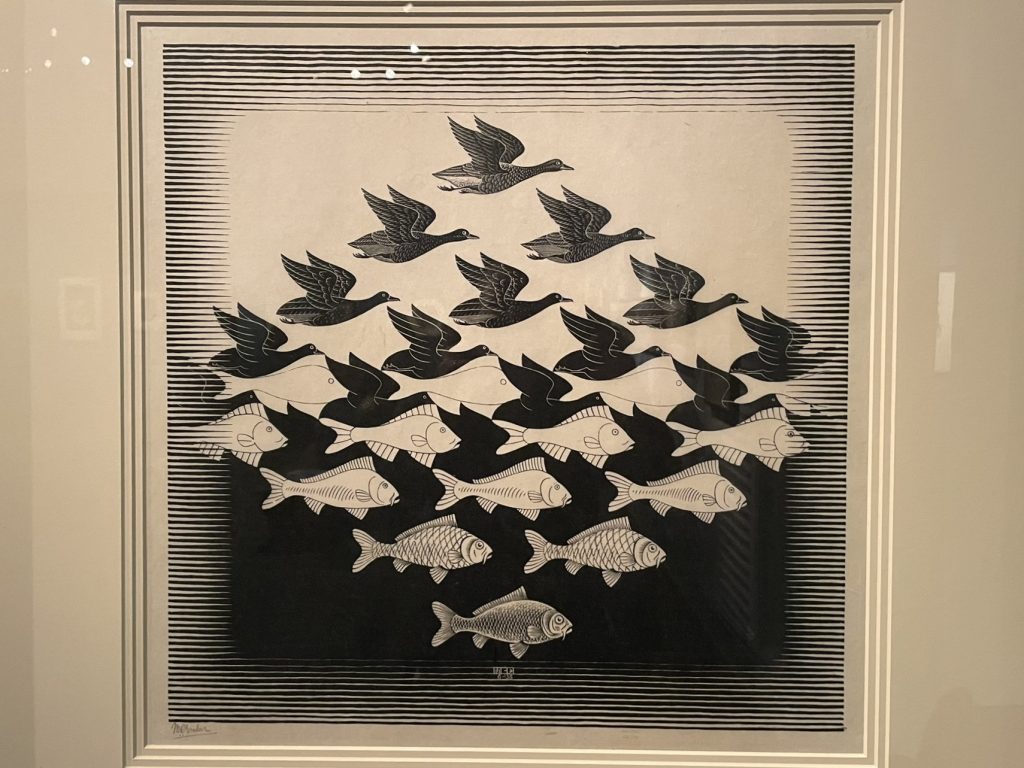
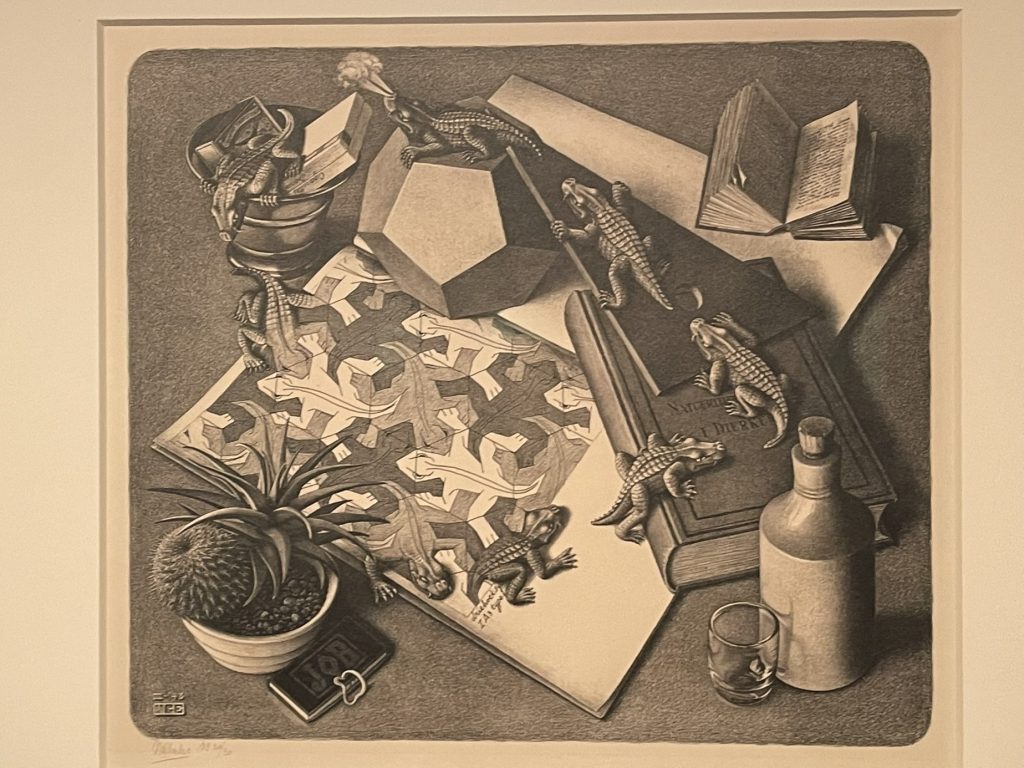
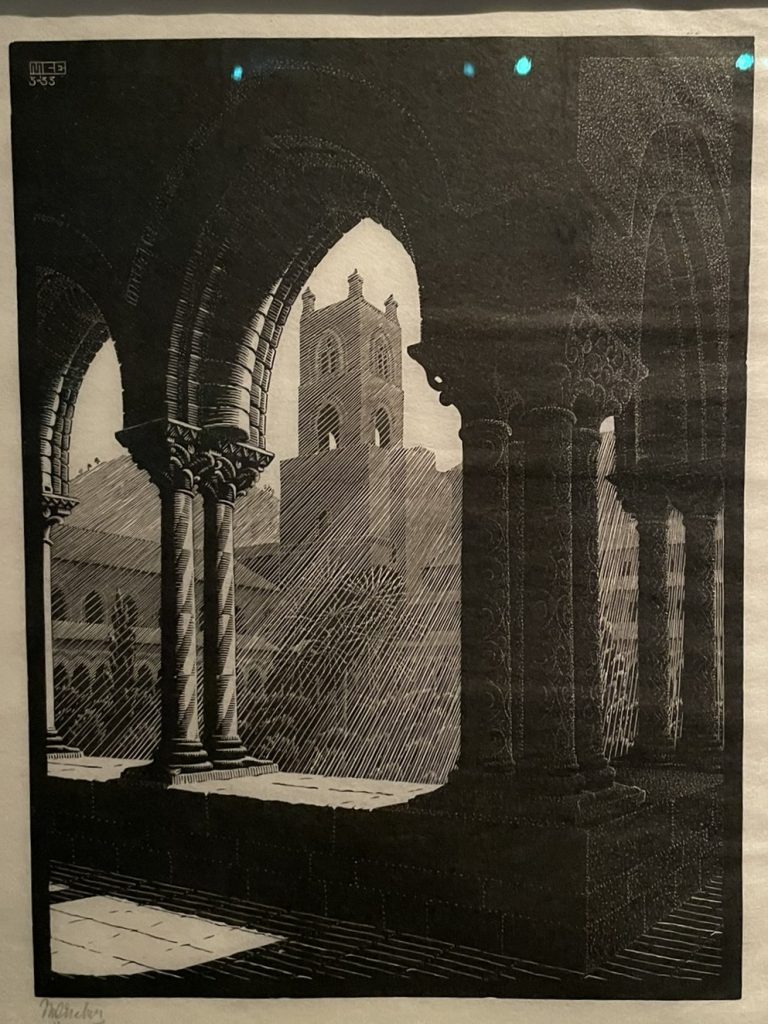
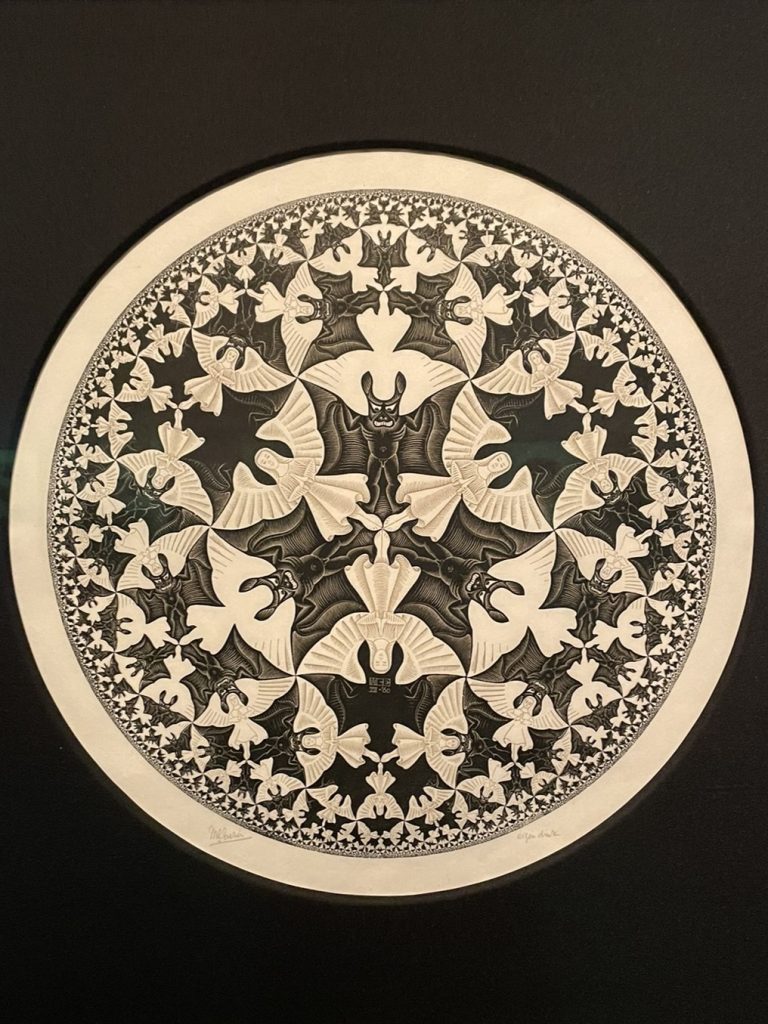
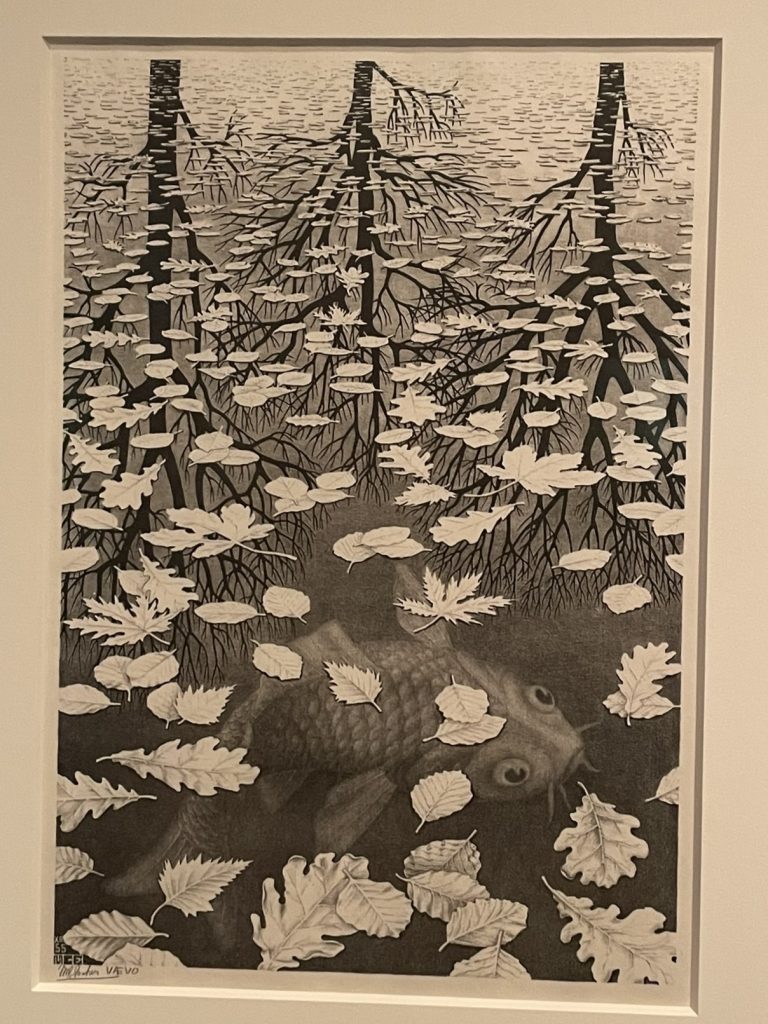





This is a very interesting, unusual artist! Love it. Thought provoking.